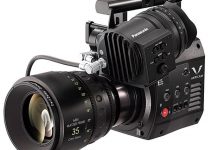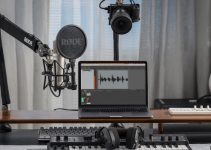The EOS R is here to stay. That’s the vibe we’re getting from Canon, and it’s easy to understand why. Investing in developing a new mount has not been easy, but time goes by and even the greatly adopted Canon EF mount starts to suffer when compared to most recent Sony E, Sigma/Leica L mounts and so on.
All major camera manufacturers are developing new shorter flange mounts lately mainly possible due to the fact that we don’t need mirrors and pentaprism anymore. But how about the sensor inside the mounts in question? Do we need to adapt to new trends and habits while exposing our footage?
Harv from Harv Video/Audio Stuff has been testing exposure while shooting with the brand new C-Log that is found on the EOS R. Curious to know how it performs? Let’s head on to find out.
Most of us have been used to exposing a tad higher in the various Log profiles, Sony, Fuji, and even previous iterations of the Canon Log, but are we sure that this new sensor and log are behaving the same as all the others?
Should we use the low increments on the ISO scale or the new feature called the Video Assist? Probably, but to be sure, we need to do some testing beforehand.
The image shot here at 0 on the in-camera meter, seems quite right at a first glance, but if we open the histogram, we can immediately see that there is quite a lot of information on the left side, below the 25%. The talent’s face has been exposed between 40 and 60 IRE roughly.
A simple grade delivers a nice balanced image, but we have to note that there’s a little bit of noise in the background, even if it’s not a problem for a web stream delivery on platforms like YouTube. Taking a step back and looking it as a whole, the footage lacks a little bit of “punch“. Overall, there’s clearly room to do better, but we’re starting well.
Stepping up the exposure to a +1 on the meter, we immediately see the histogram getting better. Now there’s little information below the 25% mark, while the small bump on the talent is right in the middle.
Voilà, just as expected the simple grade gives us a much nicer image. The face and the skin tones are targeted between 50 and 75 IRE, the sweet spot when shooting in Log formats.
The graded image is, as expected, much more “punchier“. The contrast is much better, and even the colors pop up nicely, even though, we haven’t touched them. A side to side comparison highlights all the difference that comes from a stop of exposure higher.
If we hit the +2 mark, however, the image seems completely botched straight out of the camera. The exposure seems far off, there’s nothing below 25% and the talent is completely on the upper side of the histogram.
But is it actually? Well, applying a simple grade will deliver an image with way too much contrast, crushed shadows while being not pleasant to the eye.
But with just a slightly complex grade, you still can get some decent results.
So it seems that the C-Log profile holds up quite well overexposing, even if not at the S-Log level. But still, it’s nice to know. Another welcome feature on the EOS R is the so-called View Assist, which is giving us in the monitor or viewfinder an image that has a slight grade, while the card records a clean Log file.
It’s nice to have an idea of how the exposure will turn out to be, but don’t count too much on it. Instead, we need to talk about the Low ISO modes.
Confronting a ISO 400 clip, exposed correctly and one at L100 ISO, we can see immediately the difference. The lowered ISO has a washed-out look and the highlights are completely gone.
A look at the histogram will tell you that all the information above 75% is gone, clipped. What can we take from that? It seems that the Low feature is just a digital lowering of the exposure. It could be useful in some run-and-gun situations, but it seems to be much easier to just expose at a higher ISO and then grade it accordingly in post.
So there you have it, rough testing of the EOS R and it’s Log profile: seems great, isn’t it?
[source: Harv Video/Audio Stuff]
Order Links:
Canon EOS R Mirrorless Digital Camera (B&H, Amazon)
Disclaimer: As an Amazon Associate partner and participant in B&H and Adorama Affiliate programmes, we earn a small comission from each purchase made through the affiliate links listed above at no additional cost to you.



